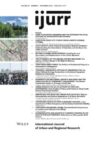This paper builds on previous work on resident participation and the mediation of housing policy at the residential level. The paper reviews different types of residential mediation arrangement, that is, types of arrangement whereby residents become more at home in their living environments, associated with an increase in social control over those environments. After examining evidence from a number of countries, in particular the UK and Sweden, the authors conclude that five types can be distinguished: marketized arrangements, personalized arrangements, partnerships, and forms of representative and cooperative resident management. These arrangements differ from one another with regard to their empowerment effects, the bias in the vertical direction of power flow within them, their effects on residents’ independence, the range over which their effects are mediated, the inclusionary or exclusionary bias of their organizational structures, and the homogeneity or heterogeneity of their social contexts. The authors attempt to make sense of this complexity of variation by viewing the arrangements against the background of formal and informal social relations in the local areas where the arrangements are formed. It is argued that the literature on community and area regeneration can be used to throw some light on the causal mechanisms involved. Finally, the authors suggest that the whole constitution of community and of residential mediation arrangements can be understood in terms of the development of phenomenological forms of privacy, identity and familiarity.
Details
Written by:
Peter Somerville, Andy Steele
Digital Object Identifier (DOI)
10.1111/1468-2427.00180
About DOI
Read full article as PDF
Read full article as HTML
See the references for this article
